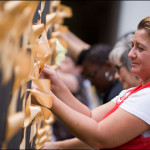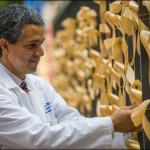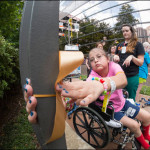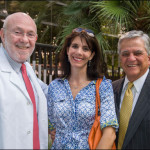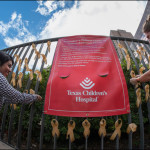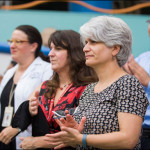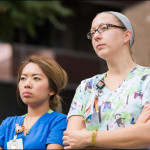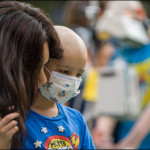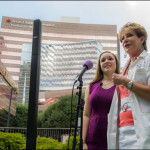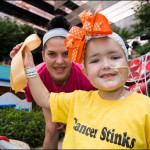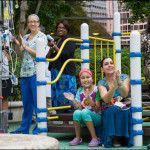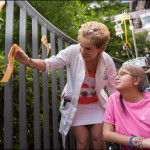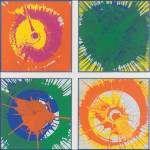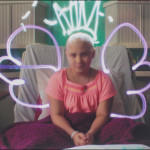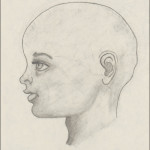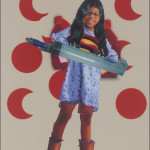
Texas Children’s Newborn Center is ranked No. 2 in the nation, but this impressive ranking is more than just a number. It demonstrates our hospital’s commitment to improving the long-term outcomes of premature and critically-ill infants in our Neonatal Intensive Care Unit (NICU).
Each year, more than 2,000 newborns are treated in all levels of our NICU where they receive the most comprehensive neonatal care available. Our Newborn Center combines research, advanced technology and world-class expertise to treat a myriad of complex medical conditions affecting newborns.
Texas Children’s is one of only two hospitals in the Greater Houston area that provides Level IV NICU care, which is the highest level of neonatal care available for extremely sick infants. Many community hospitals with less advanced NICUs transfer their patients to Texas Children’s where our neonatologists collaborate daily with an expert team of neonatal nurses in the Newborn Center.
 “Improving neonatal outcomes is what our Newborn Center is all about,” said Texas Children’s chief of Neonatology Dr. Stephen Welty. “We use a collaborative, interprofessional approach to deliver high-quality care to our NICU patients, which include premature infants as well as full-term babies with complex medical diagnoses.”
“Improving neonatal outcomes is what our Newborn Center is all about,” said Texas Children’s chief of Neonatology Dr. Stephen Welty. “We use a collaborative, interprofessional approach to deliver high-quality care to our NICU patients, which include premature infants as well as full-term babies with complex medical diagnoses.”
Texas Children’s has reached numerous milestones to improve neonatal outcomes.
- Supported by our dedicated team of neonatal nurses in the Newborn Center, Texas Children’s neonatologists collaborate with physicians and surgeons from diverse pediatric subspecialties to ensure infants receive comprehensive NICU care. For instance, our Newborn Center has organized an interprofessional group of pediatric gastroenterologists and surgeons to treat babies with digestive health issues.
- Our Newborn Center partners with Texas Children’s Fetal Center to ensure babies in utero have the best possible outcomes after birth. Remarkable advances in fetal medicine have led to innovative therapies to treat congenital diaphragmatic hernias, spina bifida and heart disease. Our hospital recently performed a laparoscopic surgical procedure to correct spina bifida while in the womb.
- Texas Children’s is one of only two hospitals in the Greater Houston area to offer total body cooling treatments to babies deprived of oxygen at birth. This therapeutic treatment allows oxygen-starved brain cells to heal thereby decreasing the potential risk for severe neurological damage. Texas Children’s is the first and only pediatric hospital in Texas to offer whole body cooling treatments to infants during ambulance transport to our Level IV NICU.
- Since neonatal nutrition is vital to helping NICU babies grow, our Newborn Center is the first hospital in the world to add human milk fat to the diets of premature infants weighing less than 3.3 pounds. A recent Baylor College of Medicine study led by our own Texas Children’s Neonatologist Dr. Amy Hair, and published in The Journal of Pediatrics, found that adding human milk fat to the diets of premature infants in our NICU improved their growth outcomes.
- Texas Children’s has implemented an exclusive human milk diet fortified with proteins and carbohydrates derived from human milk to nourish our premature infants to health. The fortifiers add calories and nutrients without changing the volume of milk to help infants grow adequately in the NICU.
- Texas Children’s has developed a donor breast milk program to ensure babies in the NICU have access to donor breast milk if mother’s milk is not available. The Newborn Center also houses a Milk Bank and lactation support programs for mothers to ensure their babies get off to a healthy start.
“Our NICU has seen a significant reduction in the rate of necrotizing enterocolitis since we implemented the exclusive human milk feeding protocol in 2009,” said Dr. Patricia Bondurant, DNP, RN, and vice president of Nursing at Texas Children’s Newborn Center. “Necrotizing enterocolitis is a potentially deadly intestinal infection common in premature infants.”
These remarkable achievements are just a snapshot of what our Newborn Center is doing every single day to improve the long-term health and developmental outcomes of our NICU patients.
Click here to learn more about Texas Children’s Newborn Center and click here to take a video tour of our impressive Level IV NICU where miracles happen all the time. (there are two links in this sentence – you can get from the Connect story)



 “Texas Children’s Health Plan is proud of the exceptional care offered at The Center for Children and Women,” said Christopher M. Born, Texas Children’s Health Plan president. “The Center is revolutionizing the way CHIP and Medicaid patients receive health care by improving access, coordinating care, and providing the highest quality community-based health care.”
“Texas Children’s Health Plan is proud of the exceptional care offered at The Center for Children and Women,” said Christopher M. Born, Texas Children’s Health Plan president. “The Center is revolutionizing the way CHIP and Medicaid patients receive health care by improving access, coordinating care, and providing the highest quality community-based health care.”


